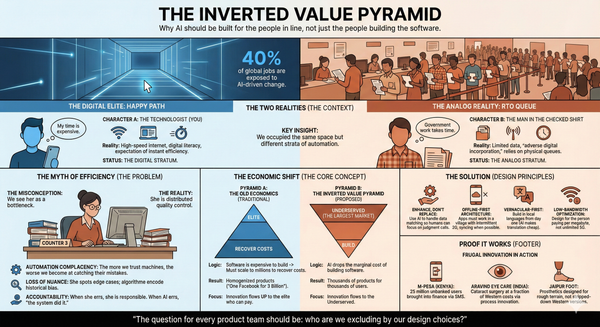Sales performance tracking in solution-driven enterprises
Solution Sales Process
A solution-driven enterprise provides custom-built solutions to customers based on their requirements. Processes in a solution-driven company can be represented as follows:
Solution selling involves a time-consuming and resource-intensive requirements analysis and solution design process.
Collaborative Sales
The requirements analysis and solution design is a collaborative process. The skills required for needs analysis and solution design may not be available in the sales team alone. The sales process is more like a project, with a team of other experts – such as technical experts for understanding the specific application requirements and designing/configuring a solution, process experts who will evaluate the process required to develop and implement the solution, as well as financial experts for estimating cost.
For example, take the case of a company that manufactures and sells modular furniture. The sales person interacts with prospects and when the lead becomes hot, gets a team in place involving an architectural consultant who analyses the structural aspects of the customer’s site, a design expert who works out a design that satisfies the aesthetic and ergonomic requirements, a fabric expert to suggest fabrics utilized etc.
The sale cannot be closed until the customer is satisfied with each aspect of the solution suggested – the architecture, design, fabric and ofcourse, price. Hence, the sale cannot be completely attributed to the sales person alone. The entire team is responsible for the sale closure.
In a product provider, all these skills are utilized during the product design stage which is done before the selling process begins. The sales person merely sells the product. Customer requirements are assumed to be standard, and the solution is in the form of a standard product. No major needs analysis is required, and there is seldom any design process involved during sales. Sales strategies are not tuned for every customer.
Also, in a solution provider, the responsibility of the sales person does not end with closing the sale. The sales person is involved in the entire order cycle, becoming the single-point contact between the customer and the company. In a product driven company, the sales person is seldom involved in order fulfilment.
Thus, the measurement of sales effectiveness of a solution sales person is far more complex than a product sales person.
Role based targets
In a product provider, the sales targets and incentives can be assigned and measured largely on the volume or value of product sales. This simple model does not work in a solution provider, because the sale cannot be completely attributed to the sales person alone. Being a collaborative process, each person who is part of the sales project has a role to play. Sales targets can be assigned to each member based on the role.
For example, the diagram here shows two sales projects. The first project is a new requirement where the sales person got involved in requirement analysis and then handed over the project to a design consultant for solution design. The second project is an add on project that is based on the initial project, and hence the design consultant can handle the requirements analysis as well as solution design. In a collaborative sales model, skills and resources may be pulled in as and when required for the particular sale.
In such an environment, targets and incentives cannot be restricted to only the sales team. It is important to define targets for all the roles involved in the collaborative sales process.
Sales targets can be assigned to each sales project team member based on the roles played. In this example, the design consultant is expected to participate (as a design consultant) in sales projects amounting to a specified value or volume over a period of say a year. Similarly, the sales person has to participate (as a sales enabler) in sales projects amounting to a specified value or volume. The design consultant also has another target, of direct sales carried out without involving a sales person. This model helps optimize cross selling as well as up selling.
This flexible model of assigning targets allows a solution-driven enterprise to completely and efficiently utilize available skillsets, by assigning sales responsibilities dynamically, based on actual requirements of the customer.
Assigning role-based sales targets
In the Reach1to1 Sales Activity Management System (SAMS), a role-based sales targets assignment system is provided.
The following table illustrates the process of assigning responsibilities (targets) to members of the sales team based on available skills.
| Sales Team Member | Role | Product Category | Sales Target |
|---|---|---|---|
| Priyesh | Sales Person | Enclosures | 1000 |
| Priyesh | Design Consultant | Active Equipment | 2000 |
| Kumaraswamy | Sales Person | Active Equipment | 500 |
| Kumaraswamy | Sales Person | Enclosures | 500 |
| Vinodkumar | Sales Person | Active Equipment | 500 |
| Vinodkumar | Sales Person | Enclosures | 500 |
Tracking Sales Performance
Sales performance is tracked by measuring the actual projected revenue from projects in the sales pipeline, and the actual orders received against the target value or volume.
The following table illustrates the sales performance of a hypothetical sales team:
| Sales Team Member | Role | Product Category | Sales Target | Projects in Pipeline | Orders Closed |
|---|---|---|---|---|---|
| Priyesh | Sales Person | Enclosures | 1000 | 100 | 25 |
| Priyesh | Design Consultant | Active Equipment | 2000 | 1000 | 250 |
| Kumaraswamy | Sales Person | Active Equipment | 500 | 125 | 55 |
| Kumaraswamy | Sales Person | Enclosures | 500 | 200 | 35 |
| Vinodkumar | Sales Person | Active Equipment | 500 | 150 | 25 |
| Vinodkumar | Sales Person | Enclosures | 500 | 220 | 65 |
Sample Sales Project using SAMS
The way it works in SAMS is illustrated in the following example:
- Anand Nair, the Sales Manager, sets the following targets for Vinodkumar and Priyesh who report to him. Priyesh is an expert on applications of Active Equipment, while Vinodkumar is a sales person. Priyesh is responsible for helping all sales persons like Vinodkumar to configure active equipment into the solutions they propose to their customers. Priyesh is also expected to directly approach customers and close sales for active equipment.
| Sales Team Member | Role | Product Category | Sales Target |
|---|---|---|---|
| Priyesh | Sales Person | Active Equipment | 1000 |
| Priyesh | Design Consultant | Active Equipment | 2000 |
| Vinodkumar | Sales Person | Enclosures | 500 |
- Vinodkumar comes across a prospective customer, and starts a new project in SAMS. He requires help in designing a solution using active equipment, for which he pulls in Priyesh in the project team by assigning him the role of design consultant for active equipment.
- Vinod and Priyesh visit the customer together, and create a solution that includes both, enclosure products and active equipment as follows:
| Description | Rate | Quantity | Amount |
|---|---|---|---|
| Active Equipment | 25 | 2 | 50 |
| Enclosure | 50 | 2 | 100 |
| Total | 150 | ||
- As soon as the expected revenue figures are entered in SAMS, the sales performance report is updated as follows:
| Sales Team Member | Role | Product Category | Sales Target | Projects in Pipeline | Orders Closed |
|---|---|---|---|---|---|
| Priyesh | Sales Person | Active Equipment | 1000 | 0 | 0 |
| Priyesh | Design Consultant | Active Equipment | 2000 | 50 | 0 |
| Vinodkumar | Sales Person | Active Equipment | 500 | 50 | 0 |
| Vinodkumar | Sales Person | Enclosures | 500 | 100 | 0 |
- After several further discussions with the customer, a final solution is proposed, based on which the customer places an order for the solution as follows:
| Description | Rate | Quantity | Amount |
|---|---|---|---|
| Active Equipment | 25 | 3 | 75 |
| Enclosure | 55 | 2 | 110 |
| Total | 185 | ||
- As soon as the order is booked in SAMS by filling in the Order Intimation Form, the sales performance report is updated as follows:
| Sales Team Member | Role | Product Category | Sales Target | Projects in Pipeline | Orders Closed |
|---|---|---|---|---|---|
| Priyesh | Sales Person | Active Equipment | 1000 | 0 | 0 |
| Priyesh | Design Consultant | Active Equipment | 2000 | 0 | 75 |
| Vinodkumar | Sales Person | Active Equipment | 500 | 0 | 75 |
| Vinodkumar | Sales Person | Enclosures | 500 | 0 | 110 |
Summary and Conclusion
Solution sales is a collaborative process that involves skills that are available with different people in the company. By using a flexible, dynamic role-based target assignment and tracking process, the Sales Activity Management System (SAMS) can enable solution-driven enterprises to optimally utilize available skills and manage the solution sales process effectively.




